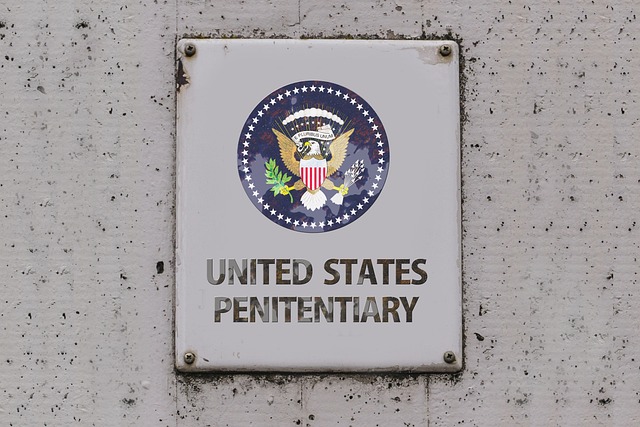Global immigration laws face challenges from undocumented immigrants exploiting loopholes, impacting border security and benefit access. With rising travel and migration, patching these gaps is vital for addressing security concerns, including Driving Under the Influence (DUI) issues worldwide. Stricter visa requirements, enhanced border controls, and intelligence sharing are key steps. However, a comprehensive approach balancing national security and humanitarian needs is necessary due to creative methods employed by undocumented immigrants. Harmonizing global immigration and DUI regulations through technology-driven solutions can improve road safety and fairness in the job market, as demonstrated by case studies from Germany, Canada, South Korea, and Singapore.
In today’s globalized world, navigating complex immigration laws and driving regulations can create significant gaps, leading to both safety and economic challenges. This article explores the critical issue of closing these loopholes, focusing on global immigration laws, strict DUI policies abroad, and harmonizing regulations for unified approach. Through case studies from diverse countries, we uncover successful strategies that address immigration and driving safety concerns, shedding light on a promising path forward for Global Immigration and DUI Perspectives.
- Global Immigration Laws: Patching Up Loopholes
- The Impact of Strict DUI Policies Abroad
- Harmonizing Regulations: A Unified Approach to Immigration and Driving Safety
- Case Studies: Successful Gap-Closing Strategies in Different Countries
Global Immigration Laws: Patching Up Loopholes

Global immigration laws are a complex web, often containing loopholes that can be exploited by those seeking to enter or reside in another country illegally. These gaps in legislation present significant challenges for authorities trying to maintain border security and ensure fair access to immigration benefits. With the rise of international travel and migration, patching up these loopholes has become a priority to address global immigration and DUI (Driving Under the Influence) perspectives effectively.
Many countries have taken steps to tighten their borders by implementing stricter visa requirements, enhancing border control measures, and sharing intelligence on known migrants with criminal records. However, as global mobility increases, so do the creative methods employed by undocumented immigrants. Addressing these loopholes demands a comprehensive approach that considers both national security and humanitarian needs, ensuring fair treatment while closing gaps in immigration systems worldwide.
The Impact of Strict DUI Policies Abroad

The implementation of strict Driving Under the Influence (DUI) policies globally has significantly shifted perspectives on global immigration. Many countries have recognized that loopholes and lenient laws can facilitate a dangerous culture of substance-impaired driving, often leading to severe accidents and loss of life. In response, they’ve adopted stringent measures, including mandatory blood tests, harsher penalties, and license suspensions, aiming to deter potential offenders. This has not only improved road safety but also influenced immigration policies, especially regarding individuals with a history of DUI offenses.
Strict DUI policies abroad have led to a more unified global approach to addressing drunk driving. As countries collaborate on international forums to share best practices and strategies, the overall goal is to create a safer, more responsible driving environment for all. This shift in perspective, driven by stringent measures, has had a profound impact on immigration dynamics, particularly for individuals seeking to migrate while facing DUI charges or convictions in their home countries.
Harmonizing Regulations: A Unified Approach to Immigration and Driving Safety

In today’s globalized world, addressing complex issues like immigration and driving safety requires a unified approach. Harmonizing regulations across borders can significantly improve both areas, especially when considering Global Immigration and DUI Perspectives. By aligning laws and standards, countries can ensure fair and consistent treatment of immigrants while maintaining robust road safety measures. This coordinated effort not only streamlines processes but also enhances cross-border mobility for lawful residents.
For instance, a unified system could facilitate the sharing of information related to driver licensing and criminal records, enabling authorities to verify credentials more efficiently. Such harmonization promotes driving safety by reducing the likelihood of individuals with unsafe or fraudulent documentation operating vehicles in different countries. It also simplifies the process for legitimate immigrants who wish to drive legally while transitioning between nations.
Case Studies: Successful Gap-Closing Strategies in Different Countries

In addressing global immigration and DUI perspectives, various countries have employed innovative gap-closing strategies that offer valuable case studies. For instance, countries like Germany and Canada have successfully integrated rigorous background checks and biometric data collection into their immigration processes, significantly reducing loopholes that could be exploited by undocumented immigrants or those with criminal records. These measures not only enhance national security but also ensure fair competition in the job market.
Additionally, some Asian tiger economies like South Korea and Singapore have implemented digital identity systems that allow for real-time tracking of individuals across various government databases. This holistic approach ensures that immigrants are properly registered, employed, and compliant with local laws, thereby eliminating many grey areas that could facilitate DUI offenses or other illegal activities. Such case studies underscore the importance of adopting robust, technology-driven solutions to close gaps in immigration systems globally.
In conclusion, addressing loopholes in global immigration laws and harmonizing DUI policies is paramount for ensuring safety, fairness, and efficiency across borders. The case studies highlighted demonstrate that targeted strategies can effectively close gaps, fostering a more unified and secure world. By learning from these successful examples, countries can collaborate to enhance immigration and driving safety standards, ultimately shaping a more inclusive and secure global landscape within the realm of Global Immigration and DUI Perspectives.






